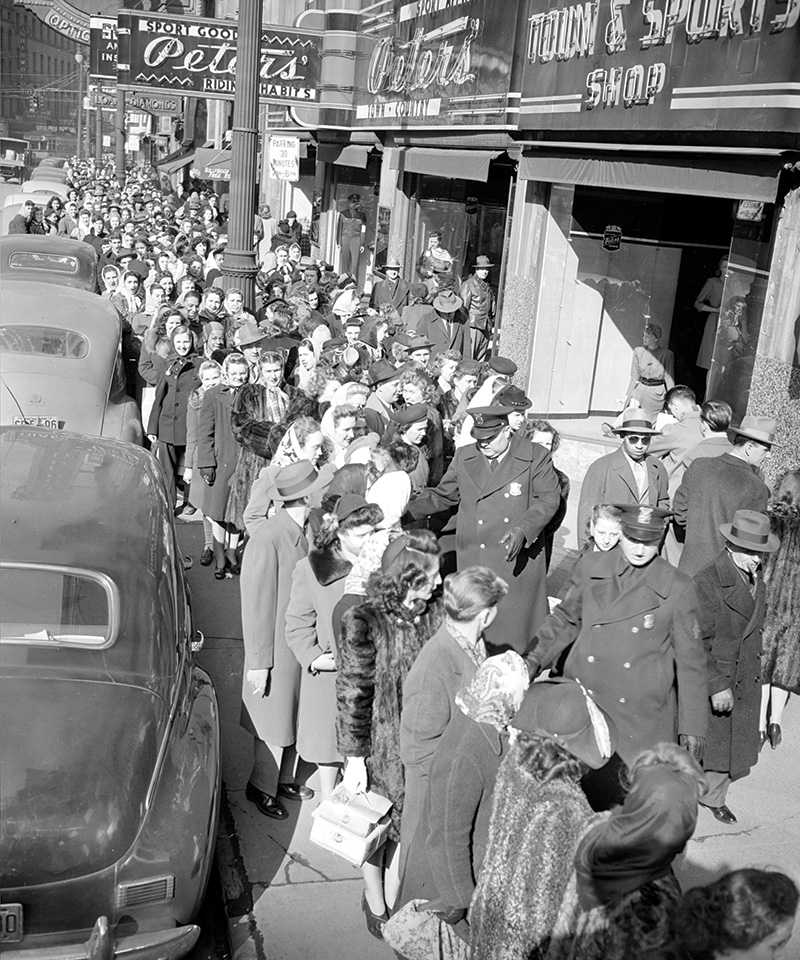
1946 Sacrifice and deprivation were a way of life on the home front during World War II. Everything from meat and sugar to gasoline and rubber were rationed. America’s women faced another inconvenience: a lack of nylon hosiery. When DuPont introduced the material in 1939, women raved about its durability and superior fit over the old silk stockings, which had a tendency to shrink. The love affair was intense but brief.
After America entered the war in 1941, nylon was appropriated by the U.S. government for use in parachutes, ropes, and tire cords. Silk came primarily from Japan, an enemy Axis power, so even old-fashioned silk stockings were not an option. Women resorted to all sorts of enterprising substitutes, including painting bare legs with gravy and sketching on seams with eyeliner. When the war ended in 1945, DuPont ramped up production of nylons, but not fast enough to satisfy women whose patience had worn thin.
Hot-tempered ladies lined up for blocks at retailers, only to discover that the demand had far exceeded supply, sparking what the media dubbed “The Nylon Riots.” Screaming, shoving, and hair-pulling were common spectacles. The most heated scene happened in the East Liberty neighborhood of Pittsburgh, when 40,000 women queued up to buy a limited number of hose. The Pittsburgh Press reported the line stretched for 16 blocks, adding “Nylon madness swept through East Liberty yesterday, when 40,000 screaming, milling women tried to buy 10,000 pairs for sale to ‘working girls only.’ ” Frazzled, overworked salesgirls only added to the bedlam.
In Augusta, Georgia, crowds stampeded through a retailer, upsetting displays and shelves as they pursued the precious quarry. A local headline reported “Women Risk Life and Limb in Bitter Battle for Nylons.” In northern California, 1,000 nylon fanciers stormed a hosiery mill when word emerged that the owner had stockpiled a supply before the war. In Detroit, the situation seemed more civil, but that could be due to the police presence, as seen in this photo of women patiently lining up at an undisclosed location. By the spring of 1946, as supply increased, “The Nylon Riots” had abated.
|
|
|











